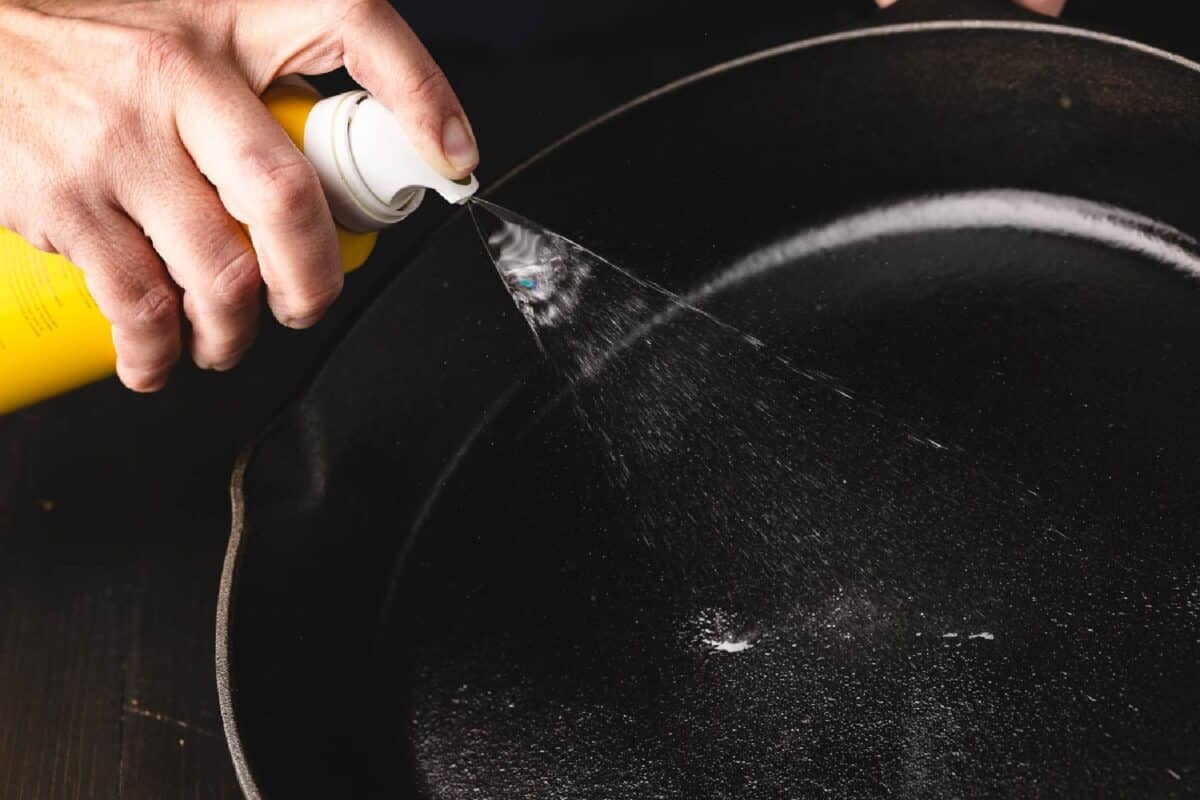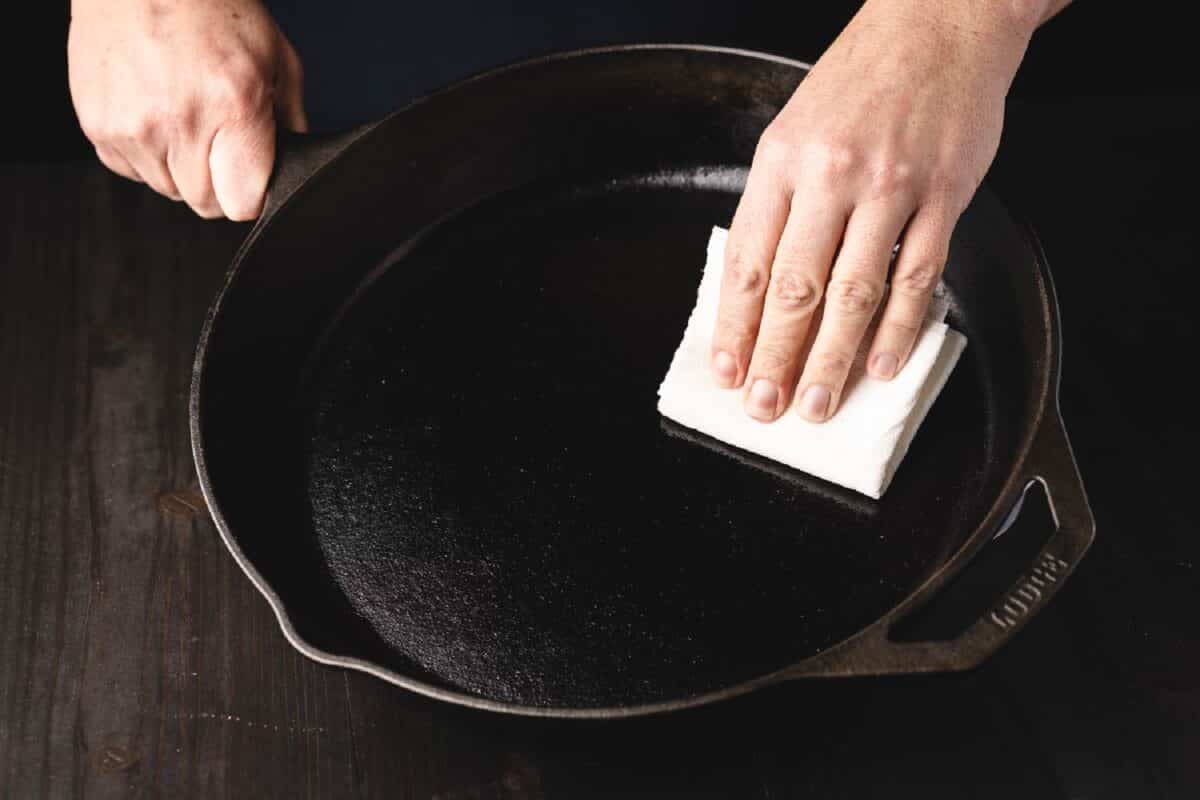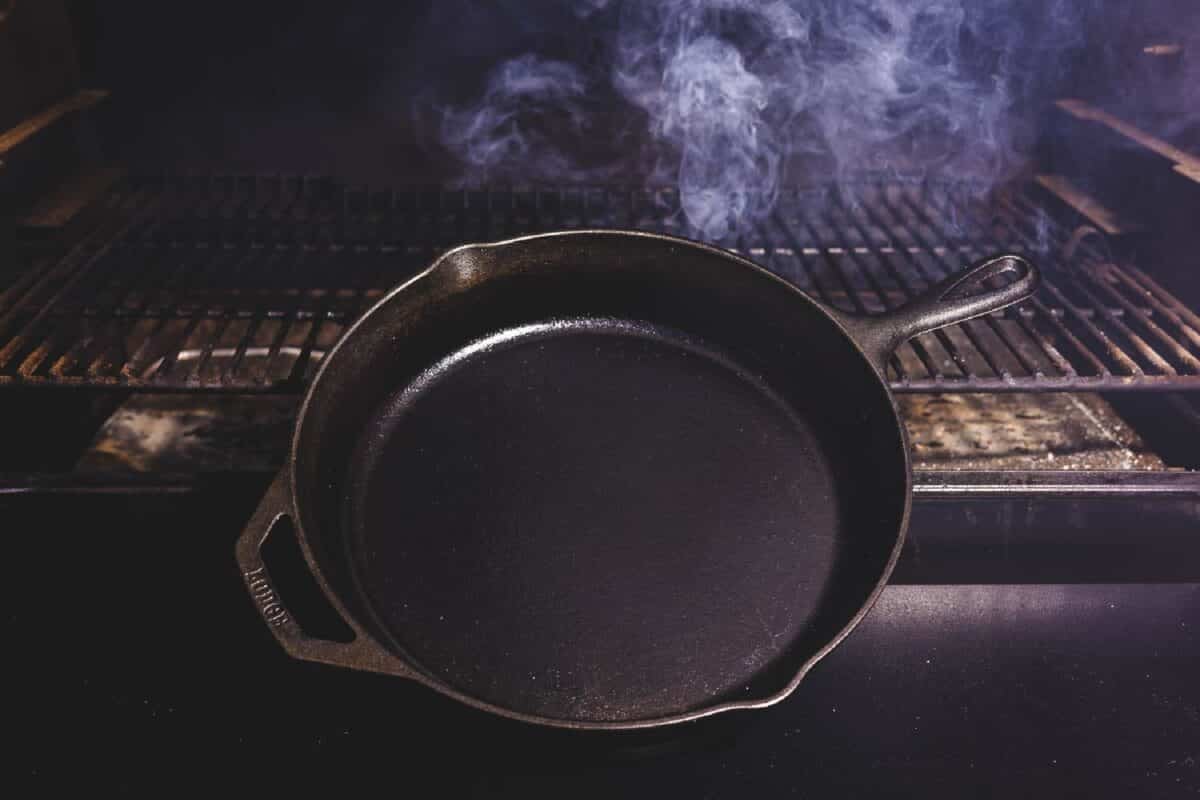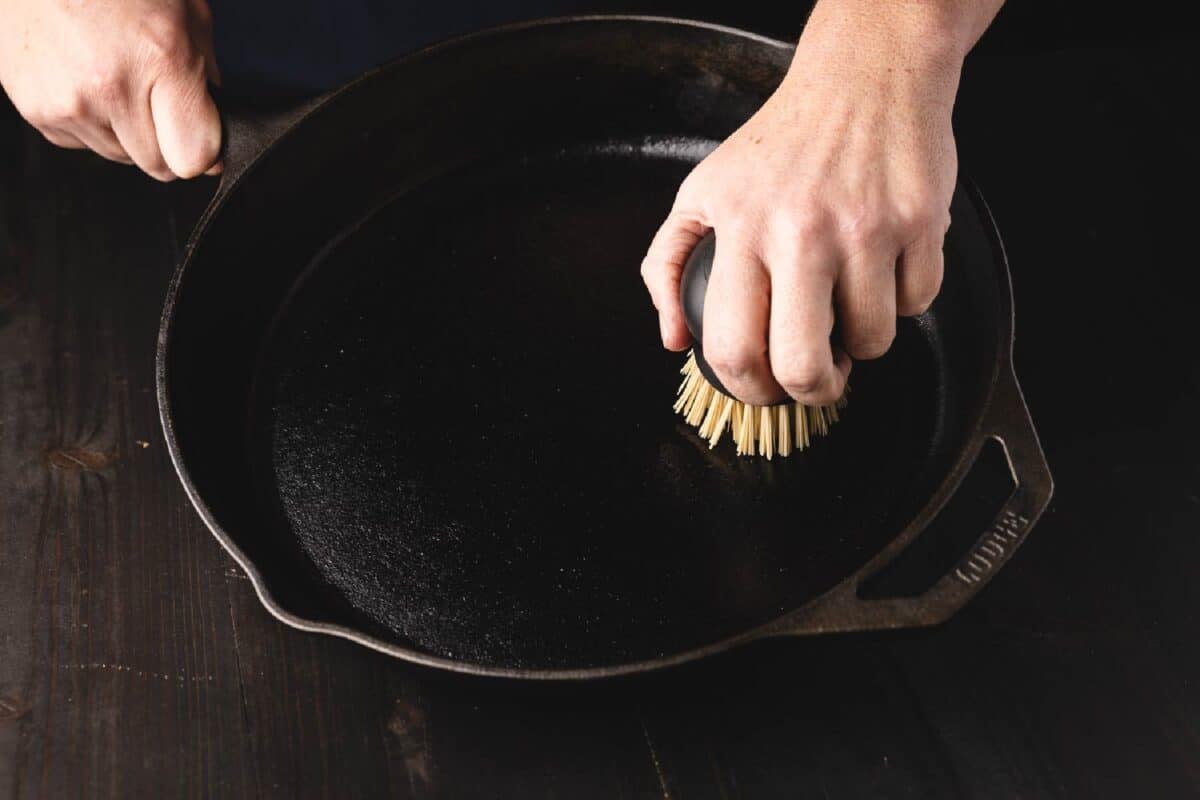Eliminates hypotheses on how to season cast iron with this simple guide that covers the cleaning, storage and care of pans and pans.

How to season cast iron
When you cook with cast iron, you get more than a simple pan: you have a tool that allows you to create flavors and plots that you cannot get in any other way. In addition, cast iron pots are incredibly resistant … when you know how to deal with it. Many chefs in the courtyard discover it in the hardest way, in the face of sticky surfaces, mysterious spots of rust and food that will not stop clinging. But what is often your greatest source of frustration can become your favorite cooking tool.
My favorite cast iron pan belonged to Todd’s grandmother, and is still going strong with just a little basic love and treatments. Those decades of use produced some of my best recipes, from steaks perfectly burned to corn bread with those irresistibly crunchy edges. Once you understand how to season your cast iron, you can use it to amplify your favorites when you feed the people you love.
Fortunately for you, I suffered from all the tests and errors with the cast iron dressing so as not to have to do it. Let me guide you through everything you need to know: from the dressing to daily care to conservation, each step designed to improve your cast iron pots to each use. With cast iron, you have a super versatile tool that will last you a life. That is, when you know how to season and take care of this.
What is the cast iron dressing?
Before facing how to season your cast iron pot, let’s talk about what the “cast iron seasoning” also means. Do you know that the lucid black surface that everyone killed each other trying to maintain? This derives from the seasoning. It is not a “seasoning” (like those of the Hey Grill Hey store), and it is not a witchcraft. It is simply the result of the oil that has undergone a process called polymerization on cast iron.
When heating the oil beyond its point of cast iron smoke, it creates a bond with metal. Think about polymerization as the addition of a protective layer of armor to the pan. Whenever you season the cast iron, you are building more than these layers, creating a naturally non -stick surface that improves only over time. You will not only keep the pan, you will improve it with every use. If adequately seasoned, cast iron can last for generations.


Tools and supplies
Before jumping into the How-to, let’s talk about what you actually need for the care of cast iron. I know it is tempting to buy every specialized cast iron tool out there (trust me, I have been there), but probably you have most of what you already need at home. Here’s what you want at hand when you are ready to season your cast iron:
- Deep space. We recommend a kitchen oil with a high smoke point. I’m a big fan of avocado oil and grape seed oil (even if the Canola oil works beautifully). Some people swear with specialized cast iron pan products, but in my cooking years, I also found simple oils. You will also need a clean paper napkin or clothes without a fluff for the application.
- Daily maintenance. I recommend keeping a Pespa with rigid bristle Near the sink for the recently used cast iron management. I always have one at hand and it is perfect for regular cleaning without damaging the dressing. A Chain scrubber It is optional but incredibly useful for those moments when the dinner gets a little as well attached to the pan. You should also keep a little Kosher salt around difficult cleaning work. You will be amazed how well the salt works as a delicate abrasive.
Deep spending on your cast iron
Once your supplies are collected, you are ready to start seasoning the cast iron. The process itself is super simple. Follow these steps so you can build those protective layers:
- Choose a high heat oil. Do you remember that polymerization process that we talked about before? It happens only at high temperatures, so choosing an oil that resists a high heat is crucial for a successful expert pan. I recommend using a high heat oil such as avocado oil or grape seed oil for the best results. These oils can resist the high temperatures necessary for an adequate seasoning without breaking or becoming sticky.
- Apply the coating. Add a thin layer of oil chosen in the pan, ensuring that the entire surface is uniformly covered. Do not forget the sides and management. Each part of the iron needs protection from rust, whether it is or not of the cooking surface.
- Place the pan upside down. After the pan is good and oiled, put it upside down on yours smoker o grill grates (or in the oven) with a pan underneath to prevent exacerbations. You want to place your cast iron upside down to avoid creating sticky spots from the grouping oil.
- Heat at high temperature. Cook the pan at 400 degrees F for about an hour, making sure to let it cool completely in the oven before handling. This cooling period is crucial for the dressing to tie correctly with cast iron.
After completing these steps, examine your dressing. You should see a nice lucid surface in development, but don’t worry if it’s not yet perfect. You can repeat the entire process up to 3-4 times to truly build the seasoning and obtain that smooth and almost non-stick surface you are looking for. Each layer adds protection and improves the cooking surface of the pan.


How many times do I need to season cast iron?
One of the greatest wrong ideas on cast iron is that a complete condiment process must be performed after each few uses. While professional kitchens season their pans often due to high volume cuisine, the configuration of the courtyard is different. Regular cooking with oils and fats adds your dressing naturally, helping to maintain the surface of your cast iron to protect between formal dressing sessions. And with adequate cure, it may be necessary to perform a complete dressing only once or twice a year.
Regular cast iron maintenance
Keeping the cooking surface of the cast iron between the seasonings is a kids game if you remember doing a couple of simple things. After cooking, clean the pan while it is still hot, but not hot. You want to get to any food before she deposits and attacks, but you don’t want to manage a hot pan. Take your cast iron still shock with hot water and your brush and you should go starting.
If you come across any food that he cannot see to leave the cast iron, he gently rubs a shirt scrubber in small circles to free him. Don’t say that cast iron purists I told you this, but you can even rub the pan with a little soapted water. Just make sure you don’t immerse the cast iron with soap or avoid abrasive, such as steel wool. Once you feel well for cleaning your pan, it is ready to dry.
The key step after cleaning is to dry carefully on the grill or hob. Turn on the high heat for a few minutes to make sure that each drop of water has disappeared, especially inside. After that, make a quick blow with your seasoning oil. That’s all. No complicated ritual or infinite seasoning cycles.


Resolution of common problems problems
Even with the best care, sometimes things are going badly. All right! I saw almost any cast iron problem out there and they are all fixable.
- Sticky points. If you find that your cast iron has points where food attacks, this usually means that your oil was too thin or irregular during the seasoning. To solve this problem, make sure the pan is clean and dry and repeat the seasoning process.
- Passing seasoning. Another common problem with cast iron is the flaking dressing. This is generally caused by an excessive seasoning that accumulates over time. If you come across flaking, remove the cast iron and complete the seasoning process.
Stiring suggestions
The cast iron can be durable by itself, but a correct conservation makes the long -term difference. I learned this lesson in the hardest way after finding a rust point on one of my favorite pans that I had accidentally left wet. In these days, I keep my most used pieces on the side shelf of the grid for easy access, but for those who need conservation, I have a system.
If you are stacking your cast iron (that everything is fine), just make a piece of aluminum sheet between each pan. In this way it prevents any accumulation of humidity and maintains the dressing protected. Some people love to hang their cast iron on the wall shelves, which seem incredible and save the cabinet space. Remember, wherever you keep the cast iron, make sure it is completely dry. In this way it is clean, seasoned and ready for use when you want some cast iron goodness.


Best cast iron recipes
With the fear of ruining the conquered cast iron pots, you will look for new and exciting ways. And boy, you arrived in the right place. I have in mind dozens of recipes designed specifically thinking about cast iron. With everything, from simple lactic biscuits to an exaggerated fantasy steak Au Poivre, you are sure to find something that your pan (and your family) will love. You can all find them in your recipe bookcase here on the website or the Hey Grill Hey app. For now, here are some of my family’s favorites to help you start:
More on the cast iron seasoning
The cast iron cuisine should be fun and delicious, and with these tips and tricks at your disposal, it will be. Now that you understand the foundations of the seasoning and care, your pan will become one of the favorites in your outdoor kitchen arsenal. To further unlock your potential, watch the video below for my first 5 dos and not do for the cast iron:
For even more professional advice, join our community of heroes BBQ in the courtyard Instagram AND Facebook. I always share new techniques, recipes and tricks to help you create fantastic meals to feed the people you love.

